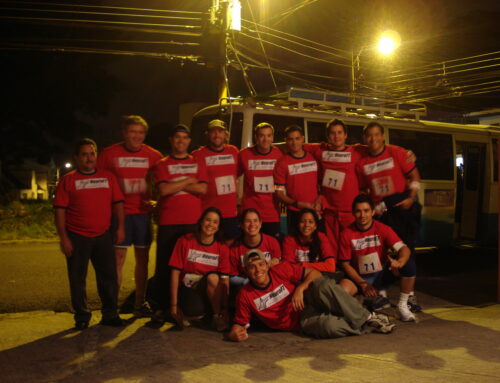Neuromuscular Electrical Stimulation and Volitional Exercise for Individuals With Rheumatoid Arthritis: A Multiple-Patient Case Report
Neuromuscular Electrical Stimulation and Volitional Exercise for Individuals With Rheumatoid Arthritis: A Multiple-Patient Case Report
Sara R Piva, Edward A Goodnite, Koichiro Azuma, Jason D Woollard, Bret H Goodpaster, Mary Chester Wasko and G Kelley Fitzgerald
SR Piva, PT, PhD, OCS, FAAOMPT, is Assistant Professor, Department of Physical Therapy, School of Health and Rehabilitation Sciences, University of Pittsburgh, 6035 Forbes Tower, Pittsburgh, PA 15260 (USA) EA Goodnite, PT, MS, DPT, is Physical Therapist, Keesler Air Force Base Medical Center, Biloxi Miss K Azuma, MD, is Postdoctoral Fellow, Department of Medicine, Division of Endocrinology and Metabolism, University of Pittsburgh JD Woollard, PT, MS, is Doctoral Candidate, Department of Physical Therapy, School of Health and Rehabilitation Sciences, University of Pittsburgh BH Goodpaster, PhD, is Assistant Professor, Division of Endocrinology and Metabolism, Department of Medicine, University of Pittsburgh M Chester Wasko, MD, is Associate Professor, Division of Rheumatology and Clinical Immunology, Department of Medicine, University of Pittsburgh GK Fitzgerald, PT, PhD, OCS, is Associate Professor, Department of Physical Therapy, School of Health and Rehabilitation Sciences, University of Pittsburgh Address all correspondence to Dr Piva at: spiva@pitt.edu Background and Purpose: Muscle atrophy is common in patientswith rheumatoid arthritis (RA). Although neuromuscular electricalstimulation (NMES) is a viable treatment for muscle atrophy,there is no evidence about the use of NMES in patients withRA. The purposes of this multiple-patient case report are: (1)to describe the use of NMES applied to the quadriceps femorismuscles in conjunction with an exercise program in patientswith RA; (2) to report on patient tolerance and changes in leanmuscle mass, quadriceps femoris muscle strength (force-producingcapacity), and physical function; and (3) to explore how changesin muscle mass relate to changes in quadriceps femoris musclestrength, measures of physical function, and patient adherence.Case Description: Seven patients with RA (median age=61 years,range=39–80 years) underwent 16 weeks of NMES and volitionalexercises. Lean muscle mass and strength of the quadriceps femorismuscle and physical function were measured before and aftertreatment.Outcomes: One patient did not tolerate the NMES treatment, and2 patients did not complete at least half of the proposed treatment.Patients who completed the NMES and volitional exercise programincreased their lean muscle mass, muscle strength, and physicalfunction.Discussion: Because of the small sample, whether NMES combinedwith exercises is better than exercise alone or NMES alone couldnot be determined. However, the outcomes from this multiple-patientcase report indicate that NMES is a viable treatment optionto address muscle atrophy and weakness in patients with RA.Strategies to increase tolerance and adherence to NMES are warranted. To obtain full text: http://www.ptjournal.org/cgi/content/full/87/8/1064
Neuromuscular Electrical Stimulation and Volitional Exercise for Individuals With Rheumatoid Arthritis: A Multiple-Patient Case Report
Sara R Piva, Edward A Goodnite, Koichiro Azuma, Jason D Woollard, Bret H Goodpaster, Mary Chester Wasko and G Kelley Fitzgerald
SR Piva, PT, PhD, OCS, FAAOMPT, is Assistant Professor, Department of Physical Therapy, School of Health and Rehabilitation Sciences, University of Pittsburgh, 6035 Forbes Tower, Pittsburgh, PA 15260 (USA) EA Goodnite, PT, MS, DPT, is Physical Therapist, Keesler Air Force Base Medical Center, Biloxi Miss K Azuma, MD, is Postdoctoral Fellow, Department of Medicine, Division of Endocrinology and Metabolism, University of Pittsburgh JD Woollard, PT, MS, is Doctoral Candidate, Department of Physical Therapy, School of Health and Rehabilitation Sciences, University of Pittsburgh BH Goodpaster, PhD, is Assistant Professor, Division of Endocrinology and Metabolism, Department of Medicine, University of Pittsburgh M Chester Wasko, MD, is Associate Professor, Division of Rheumatology and Clinical Immunology, Department of Medicine, University of Pittsburgh GK Fitzgerald, PT, PhD, OCS, is Associate Professor, Department of Physical Therapy, School of Health and Rehabilitation Sciences, University of Pittsburgh Address all correspondence to Dr Piva at: spiva@pitt.edu Background and Purpose: Muscle atrophy is common in patientswith rheumatoid arthritis (RA). Although neuromuscular electricalstimulation (NMES) is a viable treatment for muscle atrophy,there is no evidence about the use of NMES in patients withRA. The purposes of this multiple-patient case report are: (1)to describe the use of NMES applied to the quadriceps femorismuscles in conjunction with an exercise program in patientswith RA; (2) to report on patient tolerance and changes in leanmuscle mass, quadriceps femoris muscle strength (force-producingcapacity), and physical function; and (3) to explore how changesin muscle mass relate to changes in quadriceps femoris musclestrength, measures of physical function, and patient adherence.Case Description: Seven patients with RA (median age=61 years,range=39–80 years) underwent 16 weeks of NMES and volitionalexercises. Lean muscle mass and strength of the quadriceps femorismuscle and physical function were measured before and aftertreatment.Outcomes: One patient did not tolerate the NMES treatment, and2 patients did not complete at least half of the proposed treatment.Patients who completed the NMES and volitional exercise programincreased their lean muscle mass, muscle strength, and physicalfunction.Discussion: Because of the small sample, whether NMES combinedwith exercises is better than exercise alone or NMES alone couldnot be determined. However, the outcomes from this multiple-patientcase report indicate that NMES is a viable treatment optionto address muscle atrophy and weakness in patients with RA.Strategies to increase tolerance and adherence to NMES are warranted. To obtain full text: http://www.ptjournal.org/cgi/content/full/87/8/1064




